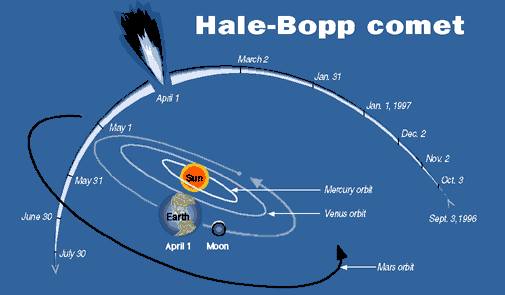|
How to watch
Hale-Bopp, which was discovered July 23, 1995, will be easy to view. A comet does not shoot across the sky like a meteor. It will remain visible night after night for weeks on end, like a star
or planet.
Find a dark viewing site, away from
glary outdoor lights. The comet is best viewed in the country, but because it's so bright, it can be seen in suburbs and cities as well.
Binoculars or a small telescope will
give a more detailed view. First find the comet with your naked eyes, then switch to whatever optical instrument you may have. If you have a telescope, use its lowest magnification. This will provide the best view.
|

 Comet Hale-Bopp
Comet Hale-Bopp
